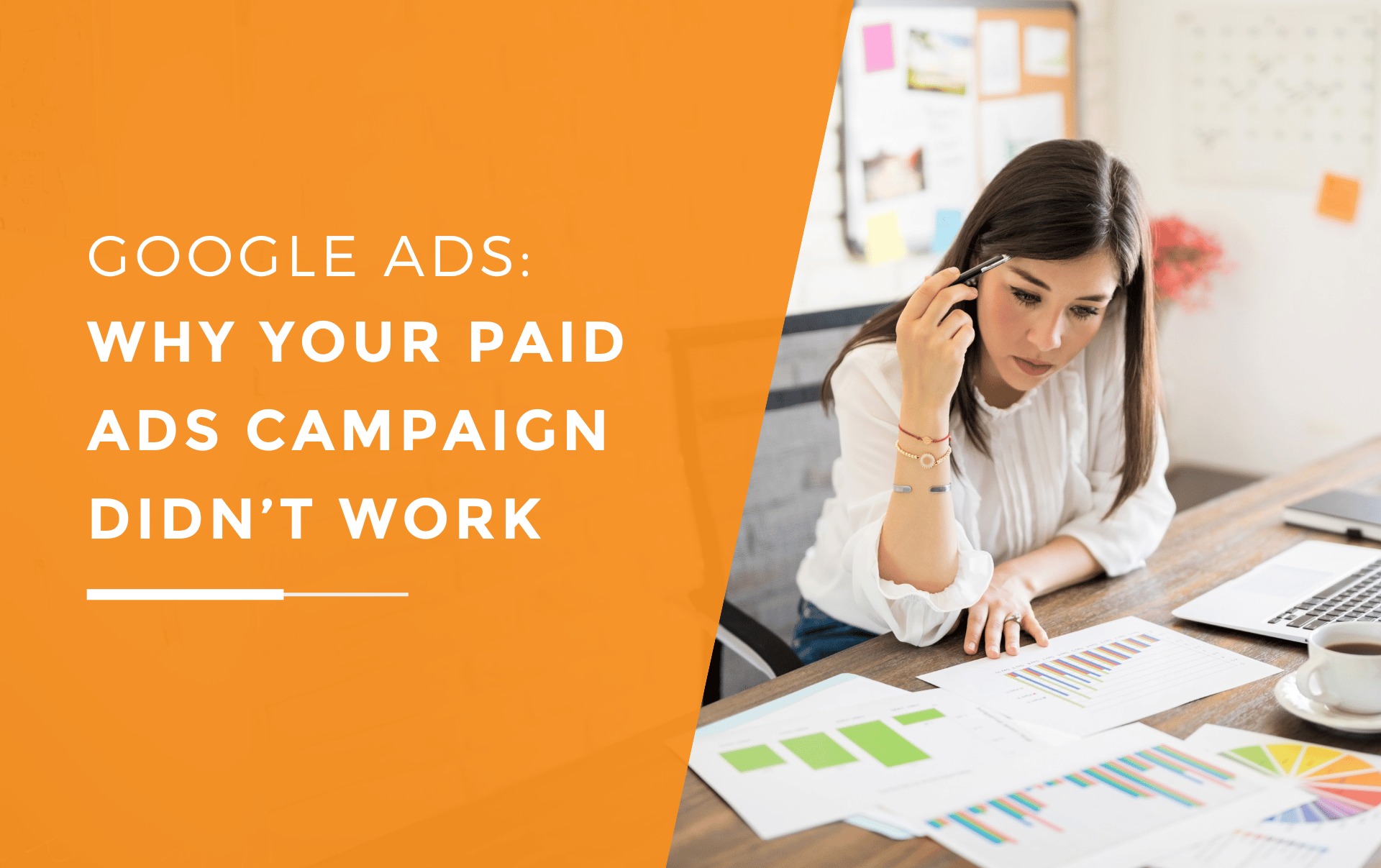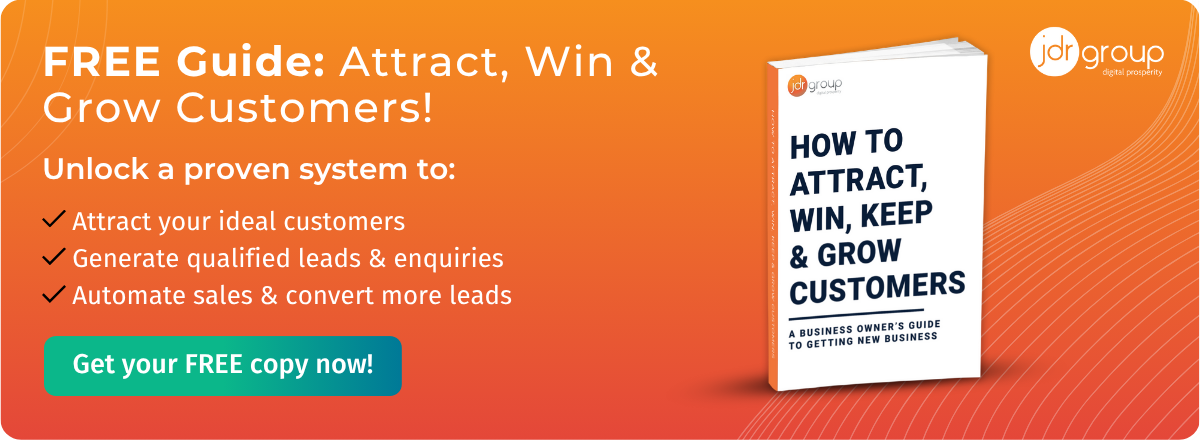Inbound Marketing: How To Grow Your Business And Sell WITHOUT Selling
by Andrew Leamon on 06-Mar-2023 13:00:00

A lot of people have put off the idea of starting their own business because they don’t enjoy the traditional sales method.
It takes a lot of confidence, intuition, and a good pinch of luck to make a cold approach to a business prospect, and even more so to close a deal through this means. Some people thrive through outbound sales, but even then, the process is often fraught with risk and hard work, and returns are frequently few and far between.
Is there a way to grow your business and ‘sell without selling?’
Yes. It’s called inbound marketing, and the idea behind it is to lay the groundwork for your customers to do the legwork and make contact with you. You may still hear old-school salespeople telling you that sales won’t fall into your lap and that you have to make the first move., but the internet, Google, and social media have changed all this.
In this article, we’ll look at the idea behind inbound marketing and how it differs from the traditional outbound methods of making sales, to help you with your sales.
What Is Inbound Marketing?
Inbound marketing is a collection of digital sales strategies and tactics used to attract potential customers to your business or website through original content creation, social media promotion, and search engine optimisation to build web traffic. The goal is to generate organic or self-selected leads and foster meaningful relationships with them by providing helpful information that they may not be able to find elsewhere.
By providing value-driven content in the form of blog articles, case studies, e-books, webinars, and more, you can attract your ideal buyers to your website and nurture them through their sales journey.
While using tools such as email marketing and automated lead nurturing campaigns, you play the part of a consultant rather than a salesperson and nurture these leads into customers by progressively building a business case for your products and services.
By investing in a carefully chosen selection of inbound marketing strategies, companies can grow their businesses without relying on intrusive outbound sales tactics.
What Is Outbound Sales And Marketing?
Outbound sales and marketing is the traditional approach to selling and advertising and was the way that most sales were made before the turn of this century. Outbound incorporates a diverse range of tactics such as cold telesales, door-knocking, direct mail campaigns, attending trade shows and conferences, buying ads in newspapers, magazines or websites, PR, and other forms of one-way communication to promote products and services.
What all these methods have in common is that they are unsolicited. The salesperson makes contact with the prospect and is primarily responsible for leading and guiding the conversation, as well as closing the deal.
In traditional sales training, salespeople are trained in ‘objection-responses’. For every objection posed by the prospect, the salesperson issues a response, until there is no longer a reason for the prospect not to make a purchase.
Outbound sales can often involve a hard, adversarial dialogue, and deals are concluded not because the prospect is genuinely persuaded of the value of the product or service, but because their objections have been disarmed. It’s seen more as negative persuasion, as opposed to the positive persuasion of inbound marketing.
We don’t mean to entirely disparage traditional sales tactics; we simply intend to point out that although outbound sales can serve their purpose and make money for businesses, it tends to be more ‘disruptive’ on business relationships and less effective than inbound marketing at creating long-term ROI.
As a result, if you instigate a relationship by continuously pushing for a sale, you’ll have more ground to make up in the early stages of the relationship to demonstrate your commitment to customer service and your willingness to put the customer’s needs first.
Some customers won’t stay the course and retention can be problematic for cold sales, with lower lifetime values than inbound customers. This isn’t such an issue for inbound sales due to the way that trust and credibility is established before the sale is made, leading to stronger, more stable, and more profitable relationships.
What Are The Benefits Of Inbound Marketing For Small Businesses?
The primary benefit of inbound marketing is that it allows your customers and prospects to make a positive and informed sales decision on their own terms, without feeling pressured or deceived. It’s hard to overstate the importance of this for constructive and long-term relationships.
SMEs frequently lack the huge spending power and brand credibility of their larger competitors. Inbound sales and marketing strategies overcome this disadvantage by enabling businesses to establish trust, credibility, and loyalty with a closely defined target audience, without wasting time and money on people who aren’t really interested.
Inbound content marketing also helps increase brand awareness and engagement as well as lead generation. If delivered as part of a personalised marketing strategy aligned with your business objectives, inbound marketing can be more cost-effective than outbound sales, since you don’t have to pay for costly public advertising placements or bulk direct sales ‘blasts’ that rely on raw numbers for success.
In What Ways Does The Idea Of Inbound Marketing Differ From Traditional Outbound Strategies?
Inbound and outbound sales and marketing techniques are not mutually exclusive. Many businesses successfully operate both methodologies side by side – although the danger of this is a siloed approach to sales and marketing that juxtaposes ‘inbound’ marketing with ‘outbound’ sales. In reality, both sales and marketing functions serve the same purpose within a business, merely acting at different stages of the process. Inbound is equally successful at closing deals on the sales front as the more established outbound methods.
However, there is no denying that the approaches of the two strategies are fundamentally different.
Inbound marketing channels resources into creating content that resonates with your target audience and encourages them to come to you. It is more about storytelling, education, and building relationships than pushing for sales. Outbound strategies, on the other hand, are more focused on actively seeking out customers through intrusive tactics such as cold calling and interruption marketing.
The goal of outbound sales is to close deals as quickly as possible, and then move on, whereas inbound strategies are more focused on the long game, providing value and support for potential customers to make investment decisions on their own terms. It’s far more customer-centred and service driven. Inbound marketing also puts greater emphasis on cultivating brand awareness, market understanding, and organic lead generation.
How To Utilise An Inbound Marketing Strategy To Grow Your SME
Companies can benefit significantly by embracing inbound marketing methods to grow their businesses without selling. To find out more about inbound marketing and sales, and how it can be applied to your business model, please call one of our Inbound Marketing team today on 01332 343281.
Image Source: Unsplash
- Inbound Marketing (SEO, PPC, Social Media, Video) (824)
- Strategy (363)
- Sales & CRM (195)
- Marketing Automation & Email Marketing (190)
- Business Growth (164)
- Website Design (160)
- Hubspot (138)
- Lead Generation (115)
- Google Adwords (98)
- Content Marketing (94)
- Conversion (48)
- Case Studies (47)
- News (47)
- Ecommerce (39)
- Webinars (34)
- SEO (24)
- AI (20)
- Events (19)
- Video (17)
- LinkedIn Advertising (15)
- Video Selling (15)
- Software training (13)
- Niche business marketing (11)
- The Digital Prosperity Podcast (10)
- Facebook Advertising (6)
- HubSpot Case Studies (5)
- December 2025 (10)
- November 2025 (6)
- October 2025 (17)
- September 2025 (16)
- August 2025 (14)
- July 2025 (14)
- June 2025 (5)
- May 2025 (19)
- April 2025 (15)
- March 2025 (13)
- February 2025 (13)
- January 2025 (8)
- December 2024 (2)
- November 2024 (4)
- October 2024 (21)
- September 2024 (4)
- August 2024 (8)
- July 2024 (14)
- June 2024 (16)
- May 2024 (25)
- April 2024 (15)
- March 2024 (18)
- February 2024 (5)
- January 2024 (10)
- December 2023 (6)
- November 2023 (10)
- October 2023 (13)
- September 2023 (12)
- August 2023 (14)
- July 2023 (13)
- June 2023 (14)
- May 2023 (15)
- April 2023 (13)
- March 2023 (14)
- February 2023 (13)
- January 2023 (15)
- December 2022 (13)
- November 2022 (6)
- October 2022 (8)
- September 2022 (22)
- August 2022 (15)
- July 2022 (13)
- June 2022 (16)
- May 2022 (14)
- April 2022 (16)
- March 2022 (17)
- February 2022 (11)
- January 2022 (8)
- December 2021 (6)
- November 2021 (7)
- October 2021 (11)
- September 2021 (10)
- August 2021 (7)
- July 2021 (7)
- June 2021 (4)
- May 2021 (4)
- April 2021 (1)
- March 2021 (3)
- February 2021 (5)
- January 2021 (4)
- December 2020 (7)
- November 2020 (6)
- October 2020 (5)
- September 2020 (9)
- August 2020 (18)
- July 2020 (17)
- June 2020 (17)
- May 2020 (10)
- April 2020 (21)
- March 2020 (24)
- February 2020 (21)
- January 2020 (12)
- December 2019 (23)
- November 2019 (12)
- October 2019 (14)
- September 2019 (16)
- August 2019 (15)
- July 2019 (13)
- June 2019 (6)
- May 2019 (8)
- April 2019 (4)
- March 2019 (2)
- February 2019 (2)
- January 2019 (2)
- December 2018 (3)
- November 2018 (24)
- September 2018 (11)
- August 2018 (9)
- June 2018 (3)
- May 2018 (6)
- April 2018 (14)
- March 2018 (12)
- February 2018 (16)
- January 2018 (15)
- December 2017 (15)
- November 2017 (18)
- October 2017 (23)
- September 2017 (19)
- August 2017 (28)
- July 2017 (27)
- June 2017 (25)
- May 2017 (18)
- April 2017 (17)
- March 2017 (16)
- February 2017 (17)
- January 2017 (14)
- December 2016 (21)
- November 2016 (27)
- October 2016 (25)
- September 2016 (16)
- August 2016 (20)
- July 2016 (19)
- June 2016 (14)
- May 2016 (20)
- April 2016 (24)
- March 2016 (22)
- February 2016 (28)
- January 2016 (27)
- December 2015 (28)
- November 2015 (19)
- October 2015 (9)
- September 2015 (12)
- August 2015 (5)
- July 2015 (1)
- June 2015 (10)
- May 2015 (3)
- April 2015 (11)
- March 2015 (14)
- February 2015 (15)
- January 2015 (12)
- December 2014 (2)
- November 2014 (23)
- October 2014 (2)
- September 2014 (2)
- August 2014 (2)
- July 2014 (2)
- June 2014 (7)
- May 2014 (14)
- April 2014 (14)
- March 2014 (7)
- February 2014 (2)
- January 2014 (7)
- December 2013 (9)
- November 2013 (14)
- October 2013 (17)
- September 2013 (3)
- August 2013 (6)
- July 2013 (8)
- June 2013 (4)
- May 2013 (3)
- April 2013 (6)
- March 2013 (6)
- February 2013 (7)
- January 2013 (5)
- December 2012 (3)
- November 2012 (2)
- September 2012 (1)
Subscribe by email
You May Also Like
These Related Blogs

More Time, More Customers, More Sales. Automate Your Marketing and Sell More With Less Effort.
Marketing automation increases productivity by taking on repetitive manual administration tasks – such as updating your CRM and sending emails – but h …

How Your Website Can Help Increase Sales - Even If You’re Not Selling Online!
A lot of articles talk about a website in terms of lead generation and marketing – i.e. getting people interested before the hard work of making a sal …

Why Your Google Ads Campaign Didn’t Work
As you probably arrived at this article while searching for answers to why your latest Google Ads campaign (or campaigns) failed to deliver, you’ll ho …




